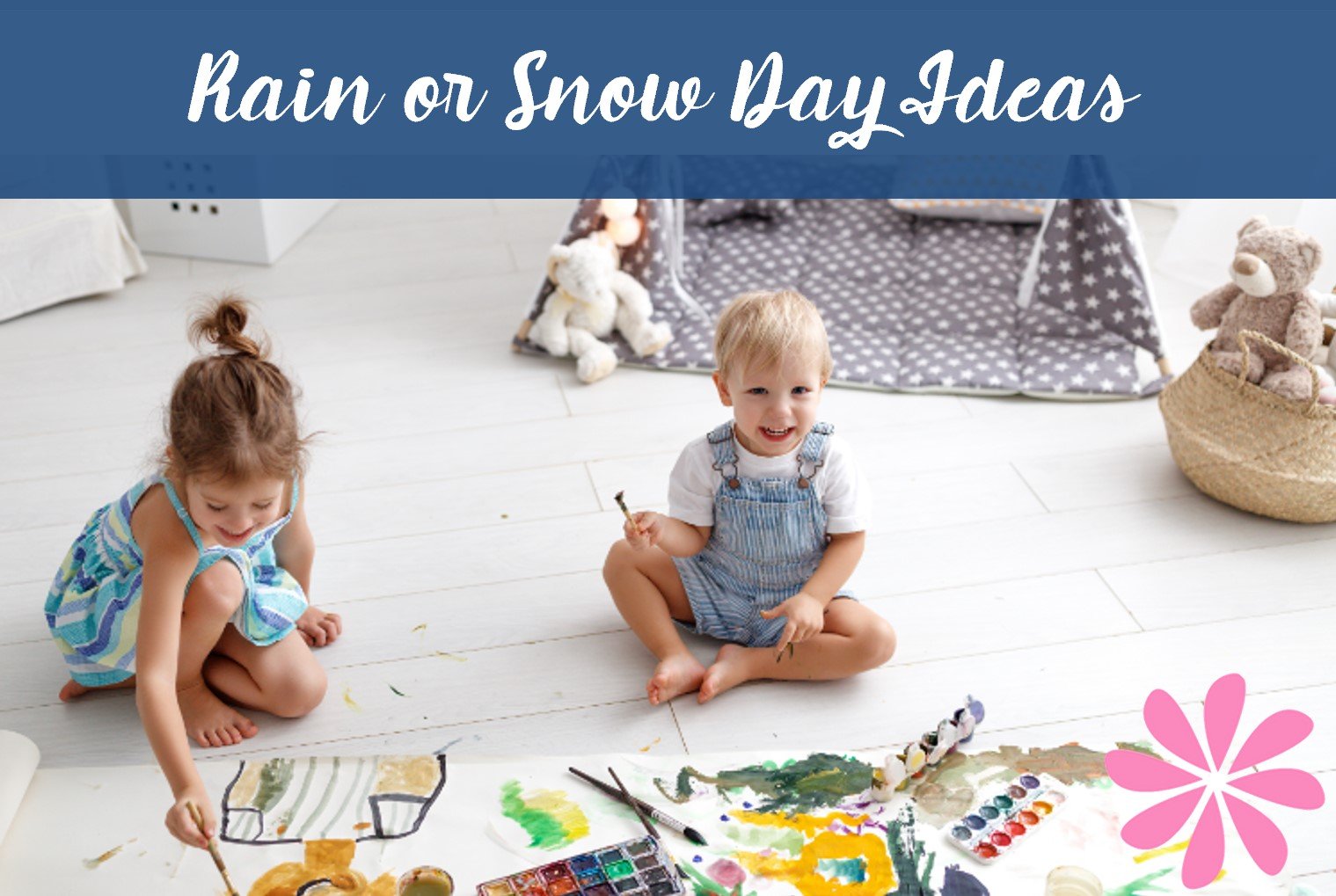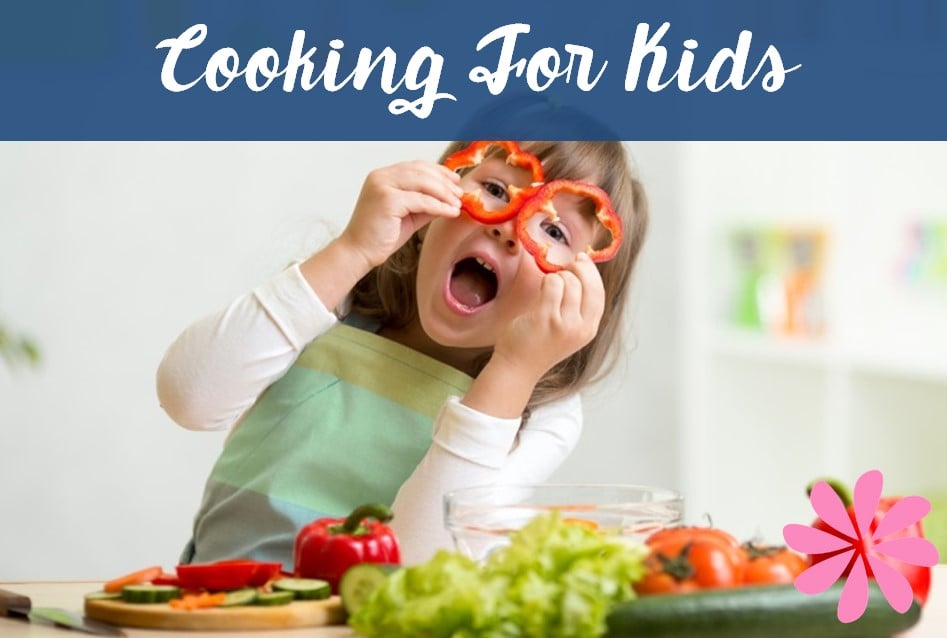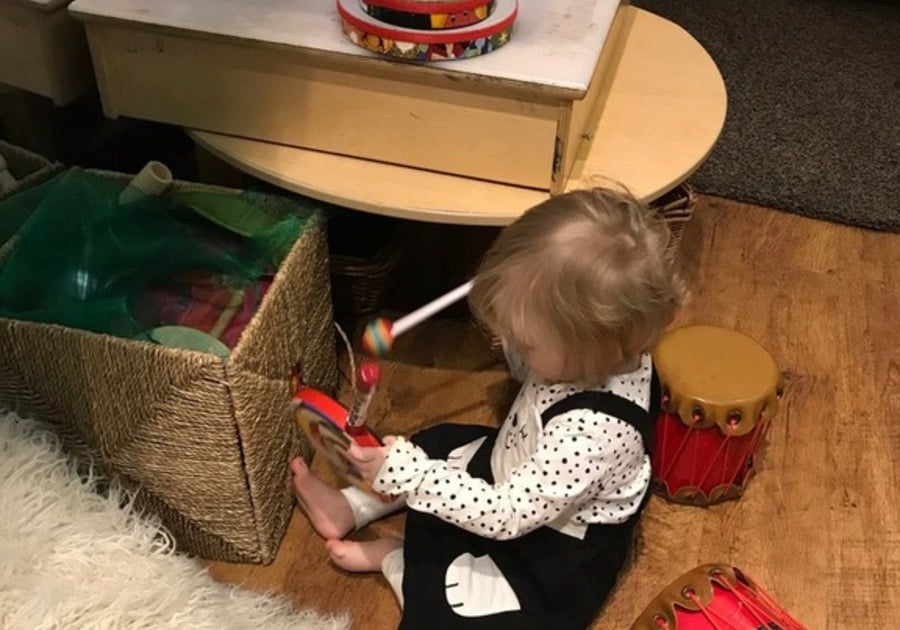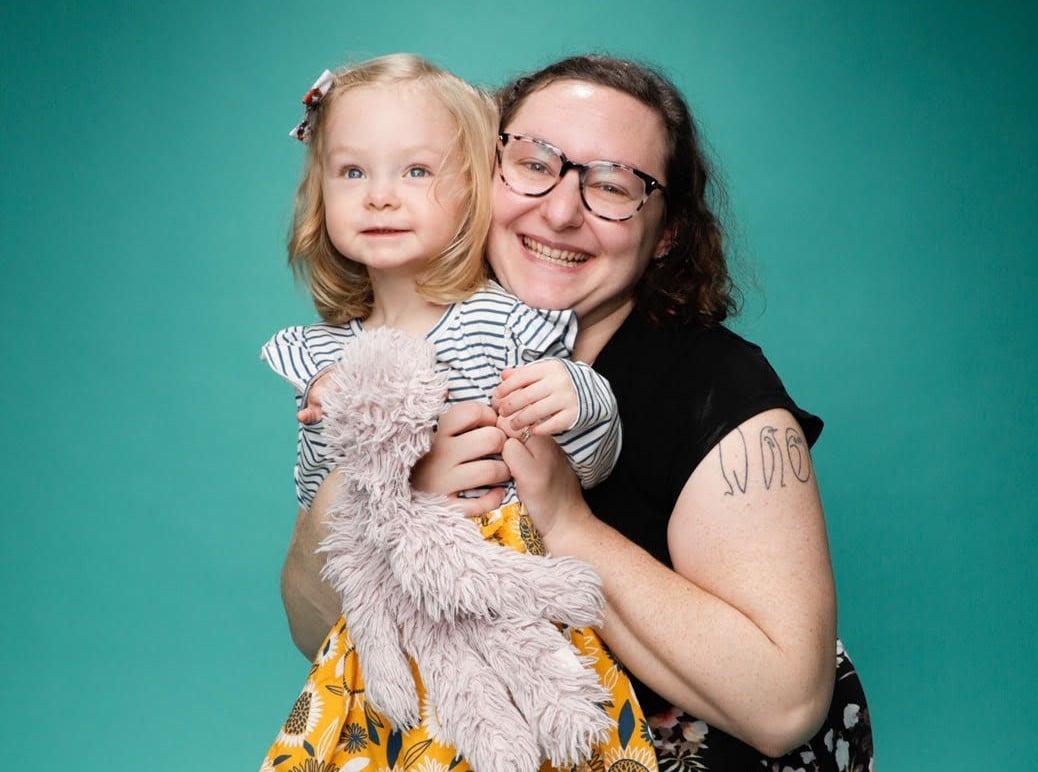“Music learning hones our auditory processing system. This helps us separate sounds out from noise and detect tiny differences in language sounds.”
-- E.B. Coffey
Music is an exciting and captivating element in the lives of young children. Most of the Mommy and Me programs are structured around learning and listening to music- there’s a reason for that! Current research shows just how important music is for young children (and for everyone, really!). Music encapsulates elements of language development, sound recognition, body coordination, mathematics, and even coping skills. Dancing to and being around music soothes and calms us and gives children an outlet for their sudden bursts of energy. Working in a classroom, I have observed just how much of an impact music can have on a child’s ability to focus and concentrate on the work at hand (and conversely, how a very up-tempo or drum-heavy beat can limit a child’s ability to focus on anything except for the music).
Seeing how essential music is to children’s development, how can we set up an area for music and movement in our homes?
Having real instruments makes a big difference. Children can tell the difference right away, and we want to show them that we respect their curiosities and passions for music. Children can be pretty rough with the toys and materials they are using, so finding a balance between using a real instrument and using something child-friendly is important. I try to stick to instruments that are meant to be used in a shaking motion and can be tapped on the ground without breaking. A small music corner should contain some maracas, shaking eggs (there are some really beautiful wooden eggs if you are trying to steer clear of plastic in your home), an African Djembe or bongo drum, a tambourine, a xylophone or glockenspiel, and perhaps a small child size guitar or ukulele. There are some really wonderful African inspired seed shakers, tone blocks (we really love one that’s shaped like a frog and you tap its back), Kalimba, and rain sticks as well. Having just a few of these special instruments will inspire and encourage your child to make his or her own music.
Additionally, you can involve your child in creating some instruments using recycled materials. One of our favorite ways to make instruments is with repurposed water bottles. You can add: jingle bells, pieces of chalk, toothpicks, aquarium pebbles, dried beans, or collected rocks. Another really wonderful recycled instrument is a wind chime; going to thrift stores (or IKEA) and finding forks and spoons to attach to a long stick with wire worked really well and made such a pretty sound. Once you start making instruments, you realize just how many different objects can produce interesting sounds!
Since music goes hand in hand with movement, we always have dancing scarves in our music corner. These are perfect for gliding around the room and engaging the body in fanciful classical compositions. They are very lightweight and don’t take up very much space, either. Another great prop for your music and movement corner are puppets. A lot of children relate different music and sounds to animals, and so we always have a few at the ready. Other great, but less convenient props might be: hula hoops, costumes, even a microphone.
Try to play a variety of different music genres in your home, and see what resonates with your child. My own daughter frequently just wants me to play nursery rhymes and music made specifically for children, but we try to listen to a balance of classical, Jazz, music sung in different languages, world music with a variety of common and uncommon instruments, modern music, and experimental sounds. She has different reactions to different kinds of music, and each are valuable as she forms relationships between sounds and language, and sound and the way she can move her body.
Each of us, from infancy, is hard-wired to be sensitive to sound patterns that occur naturally in our lives, and this allows us to build upon our communication and relationship skills. It ignites our imagination! If a child is exposed to music and movement regularly it will have a profound impact in the way that they can regulate their emotions, express themselves, and perhaps find an early love for learning how to play an instrument (or write songs, or perform in front of a crowd . . .). Creating a space for these important skills to be tinkered with will only benefit your child and give them an essential way to communicate with the world.
| Rachel McMinn is an early childhood educator at Buckle My School Preschool in Tribeca, who has taught the young 2-year-olds for almost ten years. She holds a Masters in Early Childhood Education from Hunter College and a Writing degree from Pratt Institute. She lives in Brooklyn with her infant daughter, post-production & screenwriting husband, and two attention-seeking cats. |
Related articles:
 |  |  |
Macaroni Kid Lower Manhattan is the family fun go-to source for the latest and most comprehensive information in our area. Subscribe for FREE today.










